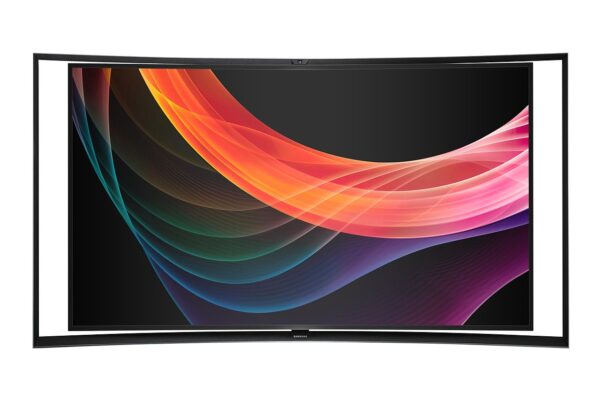What is an OLED?
OLED is an acronym for organic light-emitting diode, a technology first pioneered by Kodak in the 1970s. The idea was to create an extremely bright, flat display platform by exploiting the electroluminescent properties of certain organic molecules. In 1987, Kodak unveiled the very first viable OLED technology, described as a “novel electroluminescent device…constructed using organic materials as the emitting elements”1,2.
When Was OLED TV Introduced?
It wasn’t until 2003 that the first actual OLED device was released; a digital camera with an active-matrix OLED, or AMOLED, display. However, Kodak had also licensed the technology out to other innovators, resulting in the first OLED televisions hitting the display market in 2004. Kodak ultimately sold all their OLED-related assets to display manufacturer LG in 2009, who unveiled a flagship small panel OLED TV a year later3,4.

Despite their technically impressive specifications, early OLED TVs served as more of a technological showcase than an immediate shift in the status quo of display tech. The problem was price. LG’s first OLED TV was a small screen display lambasted for costing around £100 per inch of screen space5.
What is the Difference Between OLED and LED?
Until the release of OLED technology, liquid crystal displays (LCDs) were the predominating system on the display market. Both offered crisp, high-definition pictures at 1080p resolution or more, with successively greater coverage of colour-space standards like Rec. 709. Both used LEDs as the light source to produce vibrant images on-screen, and this is where they differed.
LCDs used a bank of LEDs, either at the back or the edges of the screen, to transmit light through a series of layers mainly comprising an alignment plate, transparent electrodes, a liquid crystal medium, and a colour filter. This array works to selectively block and filter light6 of the wavelength or wavelengths provided by the backlight LEDs.

Source: Samsung Belgium
OLEDs, by contrast, comprised a multilayer arrangement of organic compounds (electron and electron hole transport materials) sandwiching an emissive layer. This thin film stack was in turn contained between a cathode and an anode. When an external voltage was applied, the cathode injected charge carriers into the electron transport layer, which migrated through to the emissive layer, where electrons and holes were subject to recombination. This caused the formation of excitons, which subsequently leads to electroluminescence as the excitons gradually relaxed to a ground state. The use of several different organic molecules in the emissive layer provides the multiple wavelengths required by colour displays.
Learn more: OLED Vs. LCD What’s the Difference?
What the physics of OLEDs means in practice, is that OLED displays can be described as self-emissive whereas LCDs might be better described as transmissive. This means that light emission in OLED panels can be controlled at the pixel-to-pixel level, effectively shutting out all light generated by regions of the screen on the order of nanometres (nm). The result is astonishing contrast between areas where pixels are on/off. This has been marketed under various industry terms like “true black”, but the best representation of what this means for displays is technically infinite contrast ratios. The drawback is reduced brightness levels.
We explored the challenge of peak brightness in OLED displays in a comparison with emerging quantum dot-enhanced LEDs (QLEDs). Explore our articles for more deep dives into the history and future of display technology, or contact a member of the Avantama team today if you would like insights into manufacturing solution-processed OLEDs.